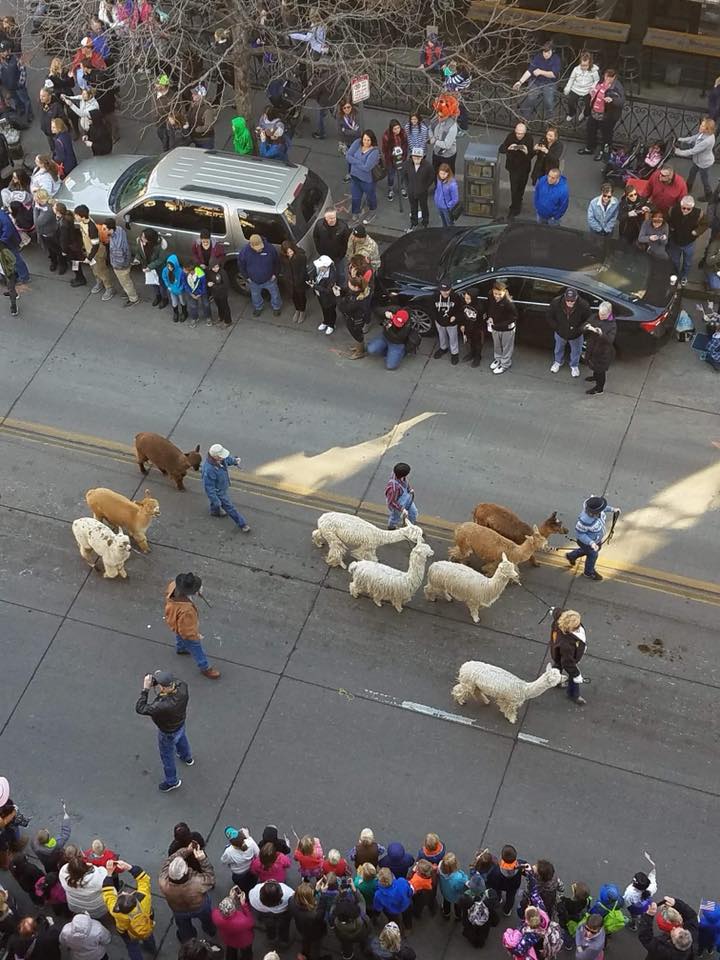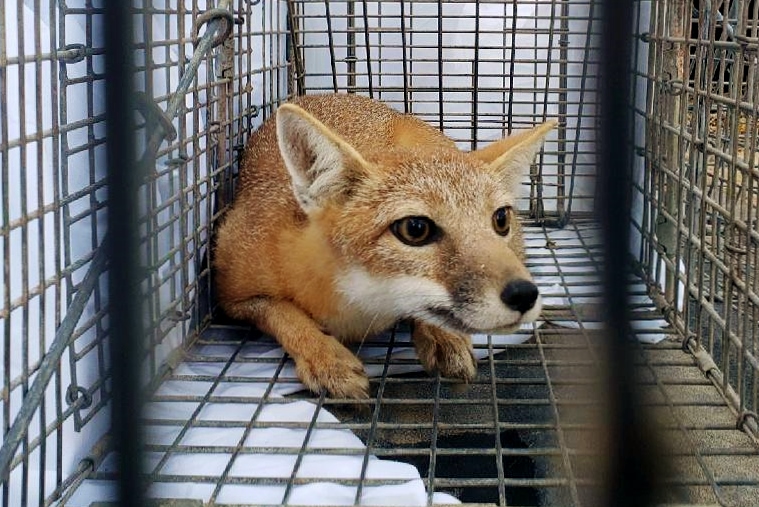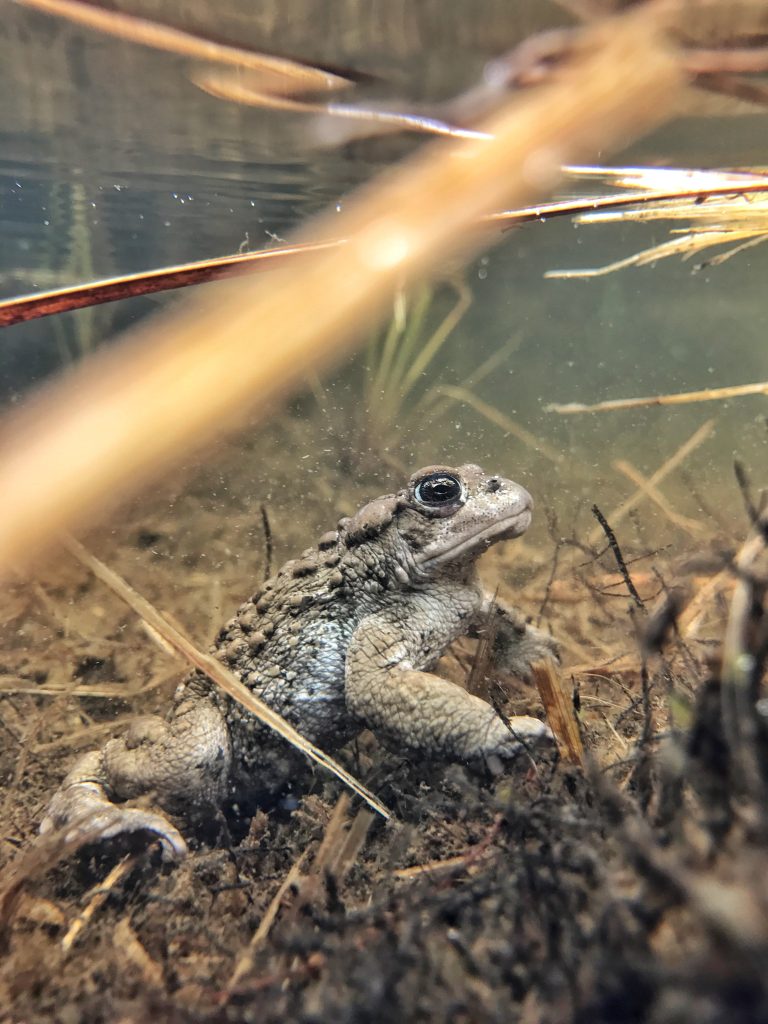A swift fox awaits processing and transport to Montana for release. Photo courtesy Colorado Parks and Wildlife
CPW helps Native American tribes, Smithsonian to restore swift fox to prairie in Montana
Tribal Council leader: ‘It’s like bringing a relative back home’
ROCKY FORD, Colo. – Across a large swath of short-grass prairie in far southeast Colorado, a team of Colorado Parks and Wildlife biologists led by Jonathan Reitz spent two weeks in August smearing skunk scent and hanging sardines inside steel cages each night.
Reitz and his team were trying to capture swift fox, a nocturnal creature abundant on Colorado’s short-grass prairies. Swift fox frequent prairie dog colonies and feast on small mammals, birds, reptiles, insects, plants and carrion.
But the swift fox weren’t cooperating.
“We struggled trapping them because summer moisture had produced so many grasshoppers that the swift fox were not hungry,” Reitz said. “They were not responding to our bait.”
Reitz was feeling pressure because this wasn’t just one of CPW’s swift fox survey projects the agency conducts every five years to check on the status of Colorado’s swift fox populations on the eastern plains.
This was an effort to help reintroduce swift fox on the northeastern prairies of Montana where swift fox once were abundant but died off decades ago during a campaign to eradicate coyotes and wolves using poison.
Now, a six-year effort is underway to reintroduce the swift fox and release them on the Fort Belknap Indian Reservation and CPW is playing the key role by trapping 30 or so swift fox this year, checking them for disease and providing them to Fort Belknap to be released.
The project is in its second year and CPW is working closely with partners from Kansas, Wyoming, the Smithsonian Conservation Biology Institute, Fort Belknap Indian Community Fish and Wildlife Department and the World Wildlife Federation.
Reitz and his team eventually expanded trapping operations to the vast Comanche National Grassland. The CPW team ran a series of 150 live traps baited each evening with all manner of fox attractants including sardines and bacon, and checked them at sunrise each day. Eventually they achieved their goal.
“We wanted to get those fox to our processing area in Rocky Ford and into air conditioning as soon as possible,” Reitz said. “We didn’t want to expose them to undue stress. We had a CPW veterinarian, Dr. Pauline Nol, on site and she took very good care of the fox. She took fecal samples for disease and hormone testing and drew blood for a suite of tests just to make sure the fox were healthy before they were sent to Montana.”
Why go to so much trouble to reintroduce swift fox in another state?
“Actually this is pretty common practice between states and it’s an exciting project on many levels,” said Mark Vieira, CPW Carnivore and Furbearer Program Manager.
The project has roots in the creation in 1994 of the Swift Fox Conservation Team (SFCT) to recover the species. The SFCT is comprised of state, provincial and federal agency partners committed to conservation of this iconic species. The agencies pledged to develop a coordinated and cooperative management approach, using state and federal funding, to rebuild swift fox populations.
“Colorado has a very strong swift fox population and we’re happy to contribute fox to the Fort Belknap Indian Community to assist with a range-wide expansion of swift fox,” Viera said. “We love to see them reoccupying historic swift fox habitat.”
Historically, swift fox lived across North America from Canada to Texas and from eastern Colorado to western Iowa. Their numbers plunged in the 1800s with pioneer expansion and habitat changes occurring during settlement of the Great Plains and the West. They also became victims of the purge of coyotes and wolves.
Most swift fox populations were extirpated from Canada, Montana, the Dakotas and Nebraska. Luckily, strong populations were found to remain in the prairies of Wyoming, Colorado and Kansas, as well as pockets of swift fox in portions of Oklahoma, Texas and New Mexico.
Dana Nelson, a doctoral student at Clemson University and a Smithsonian research fellow, is working on the project and praised CPW’s efforts to bring swift fox back to the Fort Belknap reservation..
“The whole goal of this is to bolster swift fox populations,” Nelson said. “Swift fox have not been present in the Fort Belknap area for over 50 years.
“The amount of effort that goes into this massive scale reintroduction program is huge. Colorado Parks and Wildlife, in particular, has really stepped up and done so much work in helping us coordinate the trapping effort. We could not do this without all the important people involved.”
Mike Fox, a member of the Fort Belknap Tribal Council, put the reintroduction effort in a different perspective.
“It’s like bringing a relative back home,” Fox said. “It’s not just turning an animal loose on the prairie and hoping it survives. There’s always that connection tribal people have with the animals.
“It’s a source of pride. It’s like bringing a relative back that’s been gone for many, many years.”
The entire effort makes Reitz proud.
“It’s really, really exciting to be part of a project trying to recover a species in an area where it doesn’t exist currently, and adding it back to the ecology of that system,” Reitz said. “It’s a really awesome experience to see an animal like that on the landscape where it should be.”
###
To see a video of the CPW swift fox project, follow this link: https://youtu.be/9-BtxZ5Bvdg
###
PHOTOS
Photos are courtesy of Colorado Parks and Wildlife
Cutlines:
Dr. Pauline Nol, a CPW wildlife veterinarian, examines a swift fox after its capture as Jessica Alexander of the Fort Belknap Indian Reservation restrains it.
A swift fox in a trap on the prairie.











